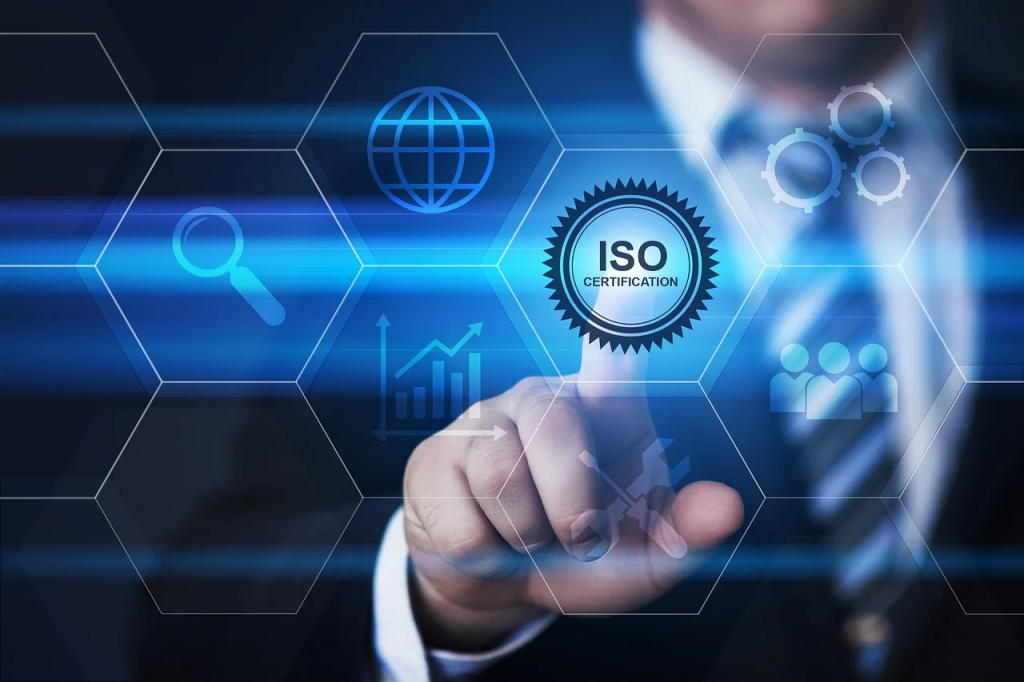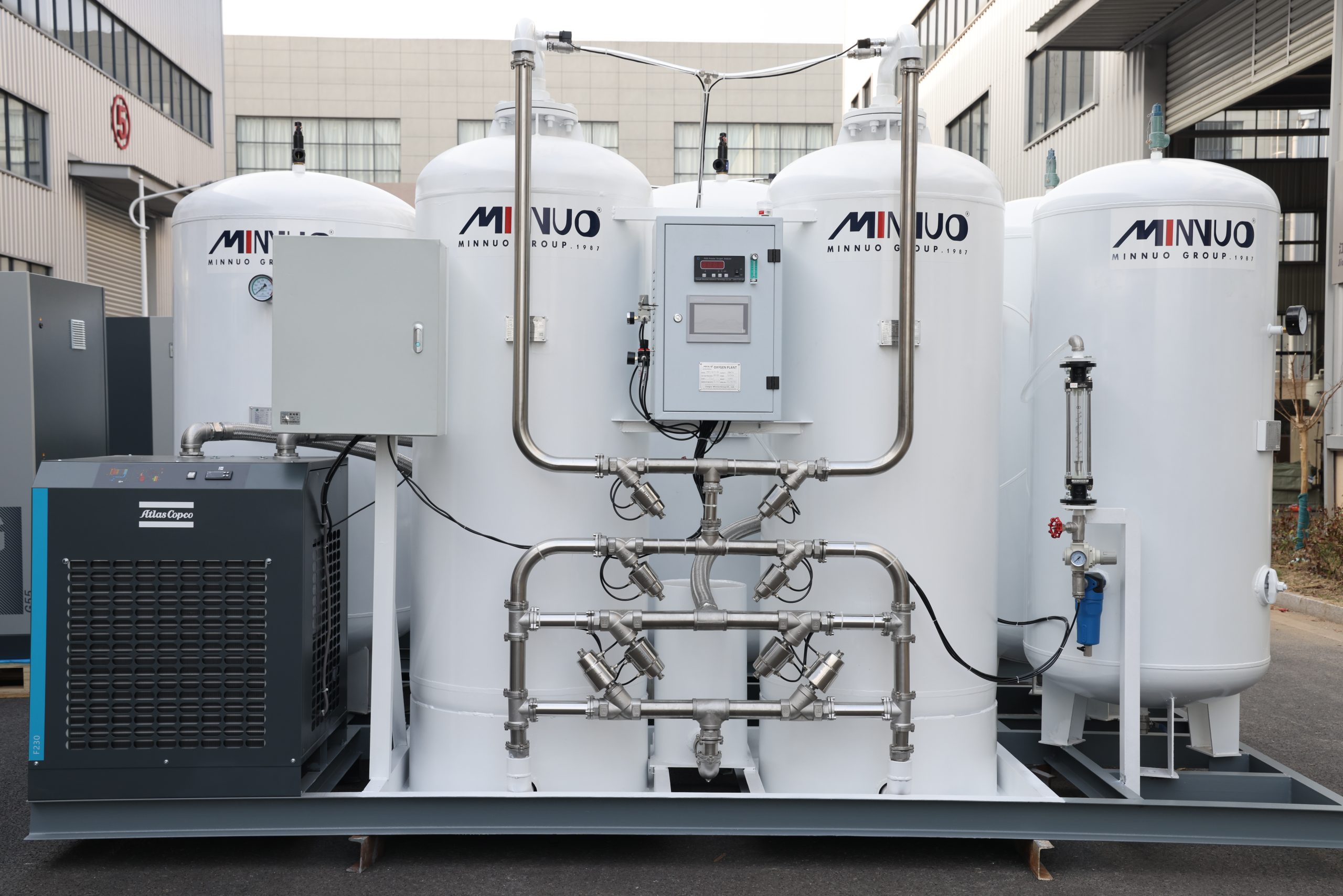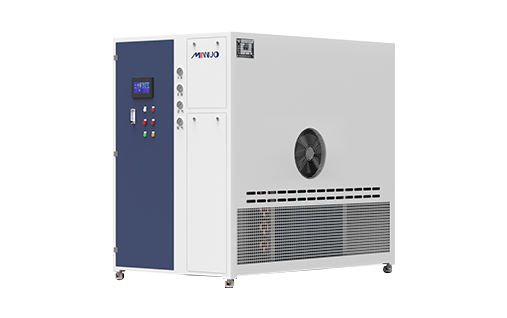The production and management of medical oxygen must follow global and country-specific quality standards, such as the USP and EP, to ensure its safety and effectiveness. From production to storage and transportation, each link must be strictly controlled, such as keeping the production environment clean, regularly sterilizing equipment, and routinely checking gas cylinders. In addition, hospitals and home care are required to follow strict oxygen equipment management procedures and train patients and caregivers to ensure safe use. Regulators regularly inspect medical oxygen manufacturers to ensure compliance, and with the development of technology, such as the Internet of Things and automated quality control, the production of medical oxygen will be safer and more efficient in the future.
The production of medical oxygen follows internationally recognized quality standards, such as the USP and EP, to ensure high purity and safety. Gas chromatographs are used to test purity during the production process, and a clean environment is maintained. Equipment is regularly sterilized, and gas cylinder storage and transportation are strictly monitored to ensure that the quality of oxygen remains unchanged. At the same time, global regulatory agencies such as the FDA and EMA conduct regular inspections to ensure compliance. Emerging technologies such as the Internet of Things and automated quality control are driving the future development of medical oxygen production, further improving safety and reliability.

Quality standards for medical oxygen
The global quality benchmark
To ensure that medical oxygen is as safe as possible, it is produced under internationally recognized quality standards. Strict guidelines are set by the United States Pharmacopoeia (USP) and the European Pharmacopoeia (Ph. Eur.), organizations that specify how pure medical oxygen must be to meet healthcare standards. In the United States, for example, the FDA (Food and Drug Administration) sets the rules, while the EMA (European Medicines Agency) does the same throughout Europe. These standards ensure that patients receive oxygen that is reliable and free of harmful impurities.
Specific country standards
While the basic requirements are similar across countries, each country has its own specific guidelines. For example, the US FDA and the European EMA both require oxygen to be of high purity, but the testing methods may be slightly different. Regardless of where it is produced, the goal is always the same: to provide safe and effective oxygen to patients in need.
How to Test Purity
Testing the purity of medical oxygen requires the use of sophisticated equipment such as gas chromatographs, which can detect the tiniest contaminants. This is a bit like a “purity check,” ensuring that each batch of oxygen meets the necessary standards before it goes into the patient’s body.
Safety production specifications for medical oxygen
Keep production clean
The production of medical oxygen takes place in a controlled environment with clean, filtered air and extremely precise management of the process. Air quality, temperature and humidity are closely monitored to ensure nothing unwanted gets in. This clean environment is essential to ensure the oxygen produced is as safe as possible.
Disinfection equipment
Equipment used to produce medical oxygen is regularly “checked” to ensure it is free of contaminants. All parts that come into contact with the oxygen are frequently sterilized to ensure that the equipment itself does not introduce any impurities.
Quality control from start to finish
Quality control is an integral part of the production process. Automated systems continuously monitor oxygen purity, and trained personnel perform sample tests for double-checking. This thorough approach ensures that every drop of oxygen meets the high standards required for patient safety.
Managing Risk
Producing oxygen safely also means being prepared for emergencies. The plant is equipped with a leak detection system and employees receive fire prevention and emergency response training. These measures help reduce risks and ensure a safe production environment.
Safe storage and transportation of medical oxygen
Storing oxygen safely
Once produced, medical oxygen needs to be stored properly to maintain its quality. Oxygen cylinders are stored in a cool, well-ventilated area and are made of corrosion- and leak-proof materials. This helps ensure that the oxygen is as pure when it is used as when it was produced.
Routine inspection of gas cylinders
Medical oxygen cylinders are regularly inspected for leaks and pressure stability. These checks are essential to maintaining the safety and effectiveness of the oxygen contained in the cylinder. Think of it as a final check to ensure the oxygen is as safe and pure as possible.
Transport oxygen with care
Transporting medical oxygen requires care and attention. Vehicles need to be equipped with shock absorbers and staff need specific training on how to safely handle medical oxygen. Proper labeling during transport and safe storage can help prevent accidents and ensure the oxygen gets safely to where it is needed.
Safety check before use
Before medical oxygen is used in a hospital or at home, it undergoes a final inspection to ensure purity and safety. This final inspection step ensures that every cylinder of oxygen delivered is ready to provide lifesaving care.

Safety management of hospital and home care
Hospital Equipment Management
In hospitals, oxygen equipment is regularly inspected and sterilized to ensure it is always available. Hospitals often have a backup oxygen supply in case of interruptions, so that patients always have access to oxygen if an emergency occurs.
Follow safe use procedures
Hospital staff strictly follow protocols for the safe use of oxygen. These include setting the correct flow rate and ensuring the equipment is properly ventilated. This attention to detail prevents accidents and keeps patients safe.
Home Oxygen Therapy Safety
As more patients receive oxygen therapy at home, it is important to understand safety. Advise patients to keep the device away from heat sources and to avoid smoking near oxygen. These simple precautions can help ensure that home oxygen therapy is both effective and safe.
Educate patients and caregivers
Education is key to the safe use of medical oxygen. Training patients and caregivers on how to properly handle oxygen minimizes risks and maximizes treatment effectiveness. Knowing what to do and what to avoid goes a long way toward ensuring safety.
Regulatory framework and legal compliance
Who oversees medical oxygen?
Medical oxygen is regulated by various organizations around the world. In the United States, the FDA ensures that strict standards are followed, while in Europe, the EMA does the same. These organizations conduct regular audits to verify that production facilities meet high quality standards and that the oxygen supplied to patients is safe.
Legal Standards and Compliance
The production and distribution of medical oxygen is subject to strict legal regulation. These rules cover every step from production to distribution, ensuring that patients receive a consistently high-quality product.
Inspection and Audit
To ensure ongoing compliance, regulators frequently inspect oxygen manufacturers. These audits are designed to verify that records are accurate, equipment is well maintained, and manufacturing environments are up to standard. This is all to ensure that patients receive the best possible care.
Consequences of non-compliance
Failure to meet standards can have serious consequences. Companies can face fines, production suspensions or even legal action. This once again highlights the importance of maintaining the highest safety standards at every step of medical oxygen production.
Future trends in medical oxygen quality and safety
Oxygen IoT and Smart Technology
The Internet of Things (IoT) is entering the field of medical oxygen production, allowing real-time monitoring of oxygen purity and storage conditions. These technologies help ensure that oxygen meets quality standards at every step, bringing more safety and reliability to patients.
Quality control automation
Automation is transforming quality control in medical oxygen production. Automated systems can continuously monitor oxygen quality, reduce the potential for human error and increase efficiency.
Sustainable production
As sustainability becomes a priority, oxygen producers are adopting more energy-efficient production methods and using recyclable materials to manufacture oxygen cylinders. These eco-friendly practices help minimize the environmental impact of oxygen production.
Harmonizing international standards
Efforts to harmonize standards for medical oxygen are growing. Harmonizing standards across countries helps ensure consistent quality and safety, making it easier for healthcare providers around the world to provide the best care.
Conclusion
Medical oxygen is more than just a medical supply, it’s a lifeline. Adherence to strict quality standards and stringent safety measures helps ensure this vital resource is reliable and effective. With the rise of new technologies and global collaboration, the future of medical oxygen looks even brighter, promising safer, more reliable care for patients around the world.
If you want to know more, please follow us MINNUO. We will give you a comprehensive explanation of medical oxygen concentrators to ensure that you buy the most suitable oxygen concentrator.






 sales2:+86 17506119168
sales2:+86 17506119168

